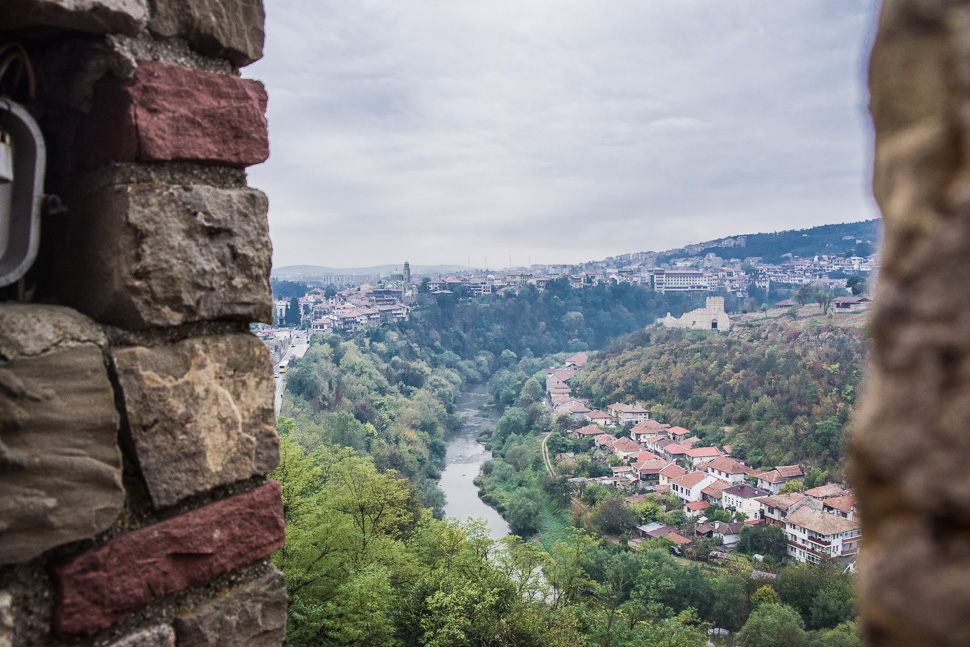Where the Yantra River makes same fascinating bends lies the old capital of the Bulgarian kings.
 |
| Main gate at Tsarevets |
Veliko Tarnovo is one of the oldest settlements in Bulgaria, with a history of more than five millennia. The first traces of human presence dating from the 3rd millennium BC. The natural landscape formed by the Yantra River made this spot early on a perfect location for a fortified city. It is located on main roads which connect West Balkans with the Black Sea and East Europe with the Middle East.
Tsarevets was the medieval stronghold which served as the Second Bulgarian Empire’s primary fortress between 1185 and 1393, housing the royal and the patriarchal palaces. The original Patriarchal Cathedral was destroyed after the Ottomans captured the Bulgarian capital in 1393, but the church was fully reconstructed in the 20th century. Its interior was repainted by artist Teofan Sokerov, who depicted important moments of medieval Bulgarian history in a modernist style. Due to these murals, the church has never been reconsecrated.
 |
| Yantra River |
 |
Cathedral of the Birth of the Theotokos
completed 1844 and reconstructed 1913 |
In the city of today lies one street which is dedicated to crafts and is one of the attractions of Veliko Tarnovo not to be missed. Many different artists have their shops here, and you can watch them work and admire or buy their artwork.
Not far from Veliko Tarnovo lies Arbanasa, a village which has many examples of Bulgarian National Revival architecture and 17th- and 18th-century churches, which we visited next.
 |
| House of a rich family – today a restaurant |
But before we went into the Church of the Nativity of Christ, a lunch at one of the impressive villas was organised for us.
 |
| Every Bulgarian meal starts with a brandy |
 |
| Shopska salad with sirene – white brine cheese |
The Church of the Nativity of Christ is the earliest and the most richly decorated church in the village of Arbanasi. The oldest layer of wall-paintings is from the end of the 16th century.
One of the most interesting scenes is the genealogical tree of Jesus Christ with the twelve ancient philosophers. But from the outside, the church looks like a stable. During the rule of the Ottomans, a church was not allowed to have a tower or to be higher than a man on a horse. Therefore, churches were built a little deeper into the ground and don’t resemble a typical church building. We were not allowed to take pictures as you can see 😉


















